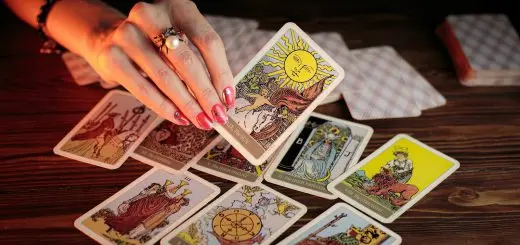Daksha Yagna: A Tale of Family Discord and Shiva’s Wrath

Looking for more amazing products? Check out our online store and explore our collection here! Happy shopping!
Before diving in, please note: This post is for informational purposes only. If you’d like to know more about how we approach topics, feel free to check out our friendly Disclaimer Page.
Hey there, amazing readers! 
We’re committed to delivering quality posts, and your support (even just sticking around despite the ads) means everything to us. So, bear with us, and thanks for helping us keep the good vibes rolling. Now, on to the fun stuff!
TRANSLATE BUTTON AT THE END OF THE ARTICLE
Daksha Yagna: A Tale of Family Discord and Shiva’s Wrath
Overview of Daksha Yagna and its Significance
The story of Daksha Yagna is a significant tale in Hindu mythology that showcases the consequences of family discord and disrespect towards divine beings.
The yagna, or grand ritual, was organized by Daksha, the king of gods and father of Sati, to celebrate and assert his authority.
However, it turned into a tragic event that not only led to the demise of Sati but also invoked the wrath of Lord Shiva.
This tale serves as a reminder of the importance of respect, love, and unity within families and society.
The Background and Importance of Yagnas in Hinduism
In the Hindu religion, yagnas hold great importance as they are considered to be a way of connecting with the divine.
Yagna, derived from the Sanskrit word "yaj," means to worship or offer.
It involves the performance of rituals, offering of oblations, and recitation of prayers to invoke the blessings of the gods and seek their guidance and protection.
Yagnas are believed to bring prosperity, purification, and spiritual growth to individuals and communities.
They also symbolize the idea of self-sacrifice and surrender to a higher power.
Introduction to Daksha, the King of Gods
Daksha, also known as Prajapati, was a powerful deity and the son of Lord Brahma, the creator of the universe.
He was appointed as the king of gods and held a significant position in the divine hierarchy.
Daksha was known for his pride, arrogance, and desire for control.
He had many daughters, one of whom was Sati, who eventually became the wife of Lord Shiva.
Daksha’s Disapproval of His Daughter’s Marriage to Shiva
Daksha strongly disapproved of Sati’s choice to marry Lord Shiva, the ascetic god known for his unconventional appearance and behavior.
Daksha considered Shiva to be an outsider and was unable to accept his daughter’s love for him.
Despite Daksha’s objections, Sati remained committed to Shiva and married him against her father’s wishes.
This act of defiance laid the foundation for the subsequent events at the Daksha Yagna.
The Grand Yagna: A Gathering of Deities and Rishis
Daksha, in an attempt to assert his authority and discredit Lord Shiva, organized a grand yagna.
He invited all the gods, goddesses, and sages to participate in the ritual, except for Shiva and Sati.
The yagna was a display of Daksha’s ego and his desire to establish himself as the supreme power.
Little did he know that this event would ultimately lead to his downfall and invoke the wrath of Lord Shiva.
Sati’s Unfortunate Demise at the Yagna
Despite not receiving an invitation, Sati’s love for her father compelled her to attend the yagna.
Upon her arrival, she was met with disrespect and humiliation from Daksha.
Unable to bear the insult, Sati immolated herself in the sacrificial fire.
Her act of self-sacrifice shocked the entire gathering and plunged Lord Shiva into deep anguish and anger.
Shiva’s Anguish and the Emergence of Veerabhadra
Upon hearing the news of Sati’s demise, Lord Shiva was consumed by grief and rage.
He tore a lock of his hair and threw it on the ground, from which emerged Veerabhadra, a fierce and terrifying warrior.
Veerabhadra was assigned the task of avenging Sati’s death and punishing Daksha for his arrogance and disrespect.
Veerabhadra’s Vengeance: Destruction Unleashed
Veerabhadra, accompanied by a horde of his followers, stormed the yagna and unleashed destruction upon the gods and sages present.
Explore the Path to Spirituality and Enlightenment – Start Here.
The once grand yagna turned into a chaotic and violent battleground.
Veerabhadra beheaded Daksha, symbolizing the ultimate punishment for his disrespect towards Lord Shiva and the tragic consequences of his actions.
The Aftermath: Daksha’s Punishment and Redemption
After the chaos subsided, Lord Shiva, realizing the magnitude of the destruction caused, replaced Daksha’s head with that of a goat, reviving him.
This act symbolized Daksha’s redemption and taught him a valuable lesson in humility and respect.
Daksha, humbled by his experience, acknowledged Lord Shiva as the supreme deity and mended his ways.
He was later allowed to continue his rule as the king of gods.
Lessons Learned: Respect, Love, and the Power of Unity
The tale of Daksha Yagna carries several important lessons.
It emphasizes the significance of respect and love within families, highlighting the consequences of discord and ego.
It also showcases the power of unity and the destructive repercussions of arrogance and disrespect towards divine beings.
Daksha’s redemption serves as a reminder that it is never too late to mend one’s ways and seek forgiveness.
Daksha Yagna’s Continued Relevance in Modern Times
The story of Daksha Yagna continues to hold relevance in modern times.
It serves as a timeless reminder of the importance of family harmony, respect, and love.
The tale also warns against the dangers of ego, arrogance, and the consequences of disrespecting others’ beliefs and choices.
In a world where discord and division are prevalent, the story of Daksha Yagna encourages individuals to strive for unity, understanding, and acceptance.
Conclusion
The tale of Daksha Yagna is a powerful narrative that explores the themes of family discord, respect, love, and the consequences of arrogance.
It serves as a cautionary tale, reminding individuals of the importance of humility, unity, and the need to embrace diversity.
The story teaches us valuable lessons that can be applied in both personal and societal contexts, highlighting the significance of harmony and respect in maintaining healthy relationships and fostering a peaceful existence.
By understanding and imbibing the lessons from Daksha Yagna, we can strive towards a more compassionate and united world.

The Enlightenment Journey is a remarkable collection of writings authored by a distinguished group of experts in the fields of spirituality, new age, and esoteric knowledge.
This anthology features a diverse assembly of well-experienced authors who bring their profound insights and credible perspectives to the forefront.
Each contributor possesses a wealth of knowledge and wisdom, making them authorities in their respective domains.
Together, they offer readers a transformative journey into the realms of spiritual growth, self-discovery, and esoteric enlightenment.
The Enlightenment Journey is a testament to the collective expertise of these luminaries, providing readers with a rich tapestry of ideas and information to illuminate their spiritual path.
Our Diverse Expertise
While our primary focus is on spirituality and esotericism, we are equally passionate about exploring a wide range of other topics and niches 

To ensure we provide the most accurate and valuable insights, we collaborate with trusted experts in their respective domains 
Our blog originally focused on spirituality and metaphysics, but we’ve since expanded to cover a wide range of niches. Don’t worry—we continue to publish a lot of articles on spirituality! Frequently visit our blog to explore our diverse content and stay tuned for more insightful reads.
Hey there, amazing reader! 
Check out our store here and take a peek at some of our featured products below! Thanks for being awesome!
















